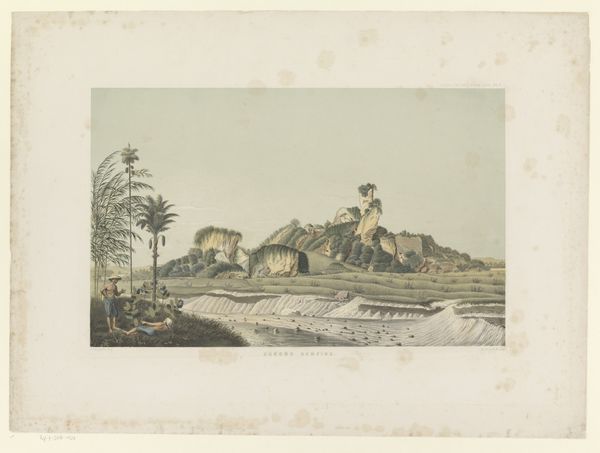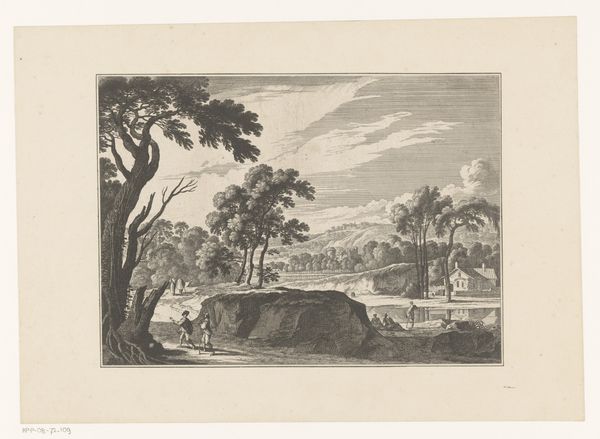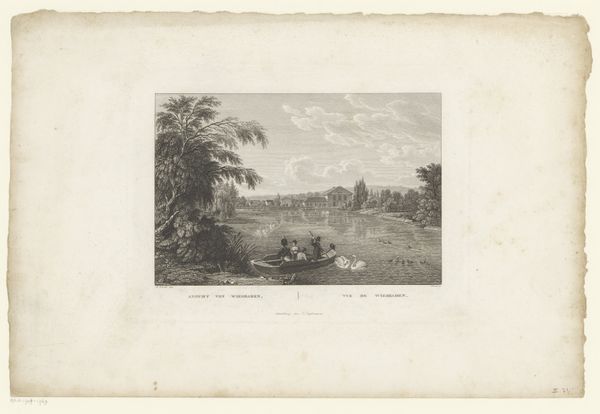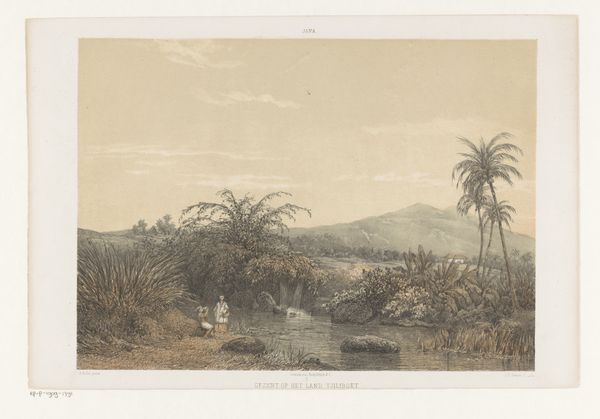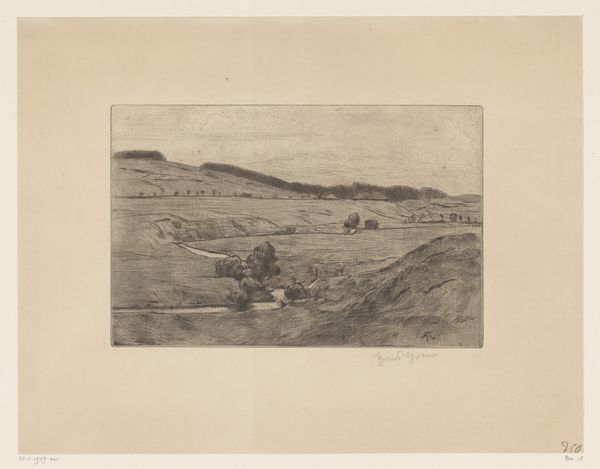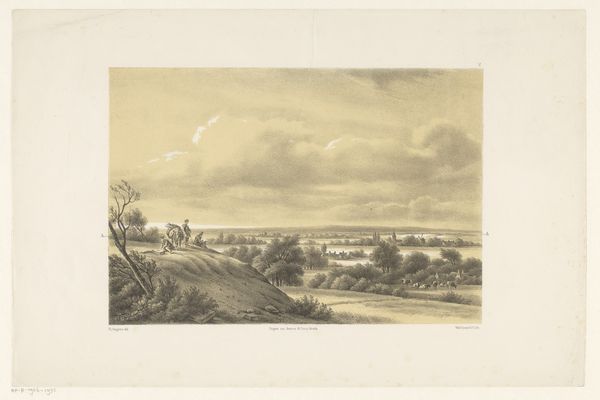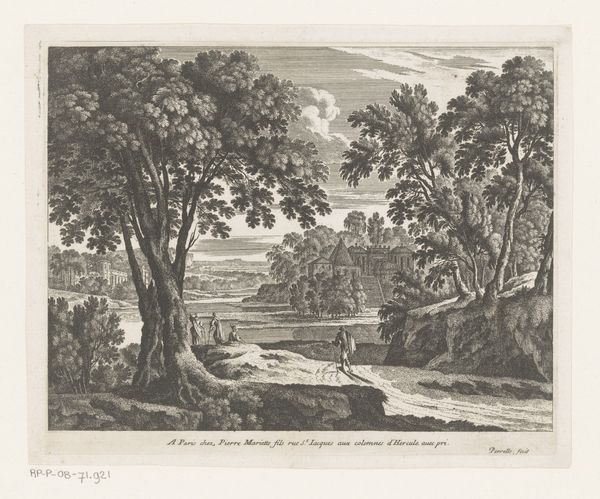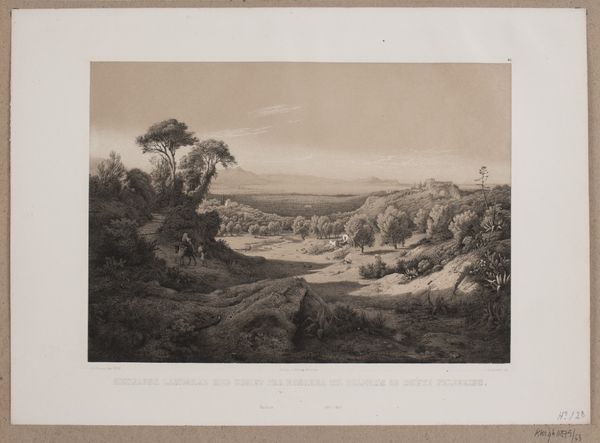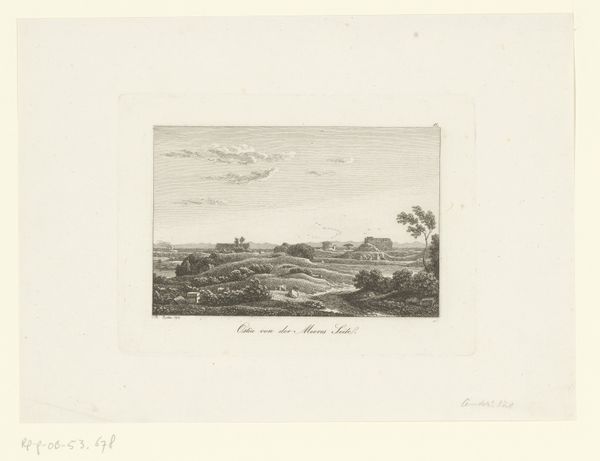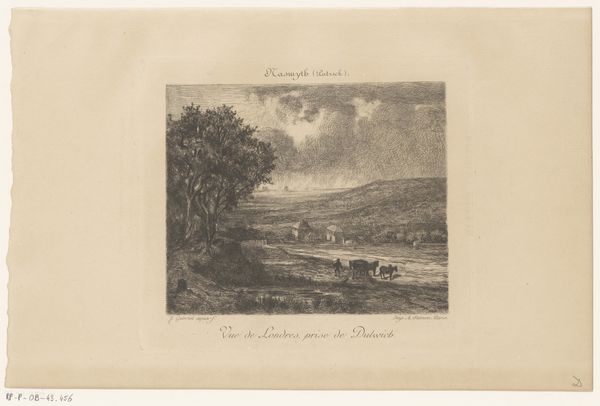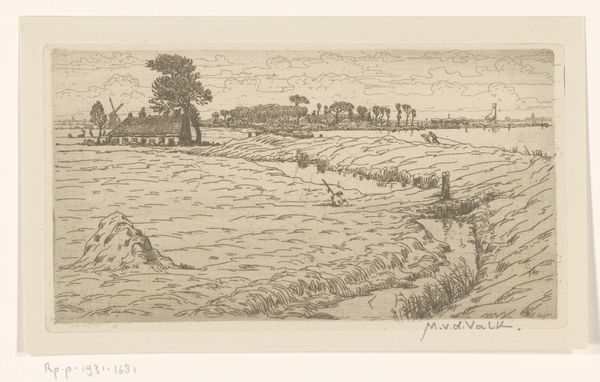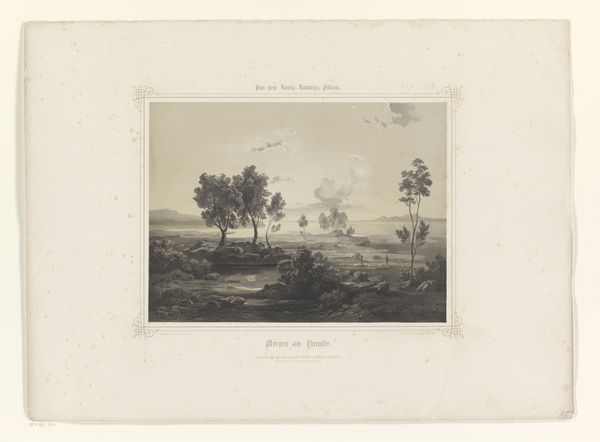
painting, watercolor
#
painting
#
landscape
#
watercolor
#
orientalism
#
genre-painting
Dimensions: height 515 mm, width 701 mm
Copyright: Rijks Museum: Open Domain
Curator: Allow me to introduce "Gezicht op een landschap bij Samarang," or "View of a Landscape near Samarang," a watercolor on paper created by Carl Wilhelm Mieling between 1853 and 1854. Editor: The overall feeling is quite peaceful. It presents an ordered and tamed exotic landscape. The division of the landscape in gridded areas creates interesting patterns. Curator: Indeed. Note how the materials employed – watercolor on paper – facilitated the artist's rendering of the landscape and contributed to that calming effect you perceive. Also, this piece aligns with the Orientalist movement, depicting a genre scene that reveals much about the labor of landscape cultivation. Editor: The iconography speaks to the exoticism prized in European artistic circles at the time. The palm tree and cultivated plains become symbolic shorthands for the East Indies, idealized. Do you agree? Curator: Partially. However, what interests me further is the means of production suggested in the art. Mieling documents this landscape, yet, more significantly, he depicts labor being enacted upon it; each little rice plot signifying someone’s work. That adds a great depth, I believe, revealing underlying social and material concerns. Editor: But those people in the composition have symbolic weight, do they not? They transform the scene into a microcosm of humanity's relationship with nature, rendered by an obviously European perspective. Curator: And consider that perspective for a moment! The artist’s own labor in producing this landscape to appeal to a European market. The piece raises questions of the commodification of exotic places and culture. Editor: Very valid point. Reflecting upon this, I now perceive a dialogue between visual codes, between what this landscape represents as a geographical space versus the cultural baggage it carries. Curator: And the material baggage of its creation and exchange! It brings new perspective to Orientalism, doesn’t it?
Comments
No comments
Be the first to comment and join the conversation on the ultimate creative platform.
